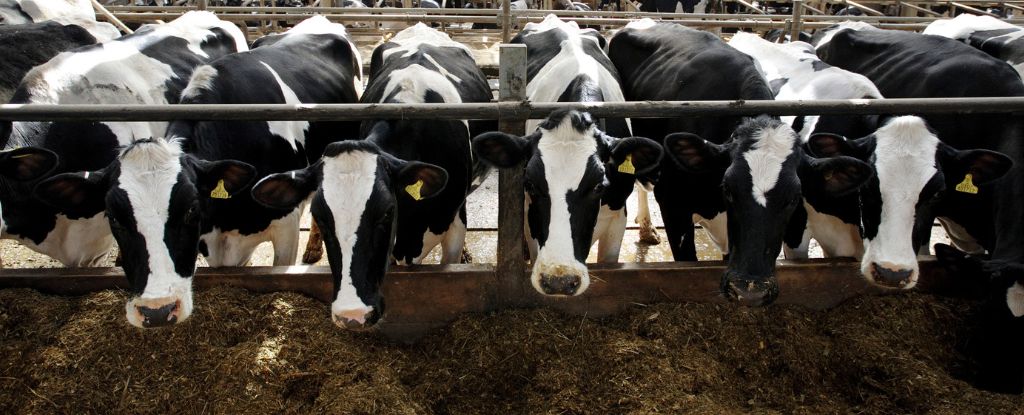Birds’ potential influenza The possibility of the virus spreading from birds to cattle and then to humans has some scientists very concerned.
That scenario is exactly Already happened This is the second time cases have been reported in the United States since the spring of 2024, the same spring that saw the first cattle in the country become infected with highly pathogenic avian influenza. influenza (HPAI).
Researchers at Iowa State University are leading a study of two Texas dairy cows infected with the H5N1 virus to better understand how the infection occurred.
In the respiratory tissue and mammary glands of two infected cows, the team found receptors used by a variety of influenza strains, including those originating from birds, pigs and even humans.
When all these receptors are together, virus Once it infects a cell, it can “learn its secret” and mutate to attach to other receptors on cells, such as those commonly found in humans.
Avian influenza is deadly to birds, but when it infects cows it appears to cause a rapid, short-term, non-fatal reduction in milk production. First confirmed Cattle are thought to have been infected around the world, and experts are not yet sure how the virus, which evolved to infect birds, is spreading from cow to cow.
New research points to the milking process as a mechanism for the spread of infection: favorable receptors for the H5N1 virus have been identified in the mammary glands of cows, helping to explain why the virus has an unusual effect on the animals’ milk.
Dairy workers say that when cows are infected, their milk thickens and becomes discolored. And when the milk is raw and unpasteurized, scientists say Suspect It can be a source of infection for other mammals, including ourselves.
High concentrations of the H5N1 virus were detected in the contaminated milk. According to officials According to the US Centers for Disease Control and Prevention (CDC), Note“Sporadical human infections without sustained spread do not change the CDC’s assessment of the risk to the U.S. general public, which it considers to be low.”
Thankfully, Two dairy farmers In the United States, people infected with the H5N1 virus from dairy cows developed only mild symptoms and recovered without transmitting the virus to others, but the pathogen they transmitted showed worrying signs. Signs of Adaptation When scientists analyzed it, they found that it had an effect on the mammalian body.
It’s unclear whether these adaptations occurred in dairy cows or dairy workers, but scientists at Iowa State University are eager to find out more.
Influenza A virusInfluenza viruses such as H5N1 are known to infect cells via receptors made of sialic acid. Virus strains evolved to infect birds have a preference for specific sialic acid receptors compared to virus strains evolved to infect mammals. Even at the species level, influenza A viruses are quite specific in the sites at which they attach to cells.
Researchers from Iowa State University and the University of Georgia are concerned by the expression and distribution of sialic acid found in the respiratory tract and mammary glands of H5N1-infected dairy cows.
Both locations appear to be susceptible to avian flu and show signs that the virus may replicate there.
like coronavirusInfluenza viruses are “inherently error-prone,” the authors say. write“Infection of a new host species provides the virus with the opportunity to replicate and then mutate to adapt to the new host,” he added.
” [influenza A virus] Metastasis to tissues outside the respiratory system is rare.” write Research team.
The researchers believe that the slightly acidic environment in cows’ mammary glands, combined with the presence of sialic acid receptors, may make cows more susceptible to infection with H5N1.
Although these hypotheses require further study, the findings suggest thatUrgent“To understand how avian influenza viruses infect so many mammal species.”
This is also an important reminder to consumers to always drink pasteurized milk.
This study Emerging infectious diseases.


